Robotics Cabinet, Scientific Escape Room Opened in Ružička's Birth House
September 23, 2022 - In the birth house of Lavoslav Ružička, a Vukovar-born scientist and Nobel prize laureate, the Youth Peace Group Danube presented their project "raSTEM - Development of STEM in Vukovar". A Scientific Escape Room and a Technical-Robotics Cabinet were opened as its result.
As Glas Slavonije reports, the partners on this project were the European Home Vukovar, FERIT Osijek, the Nikola Tesla Technical School Vukovar, the City of Vukovar, the VURA Development Agency and the Vukovar Gymnasium.
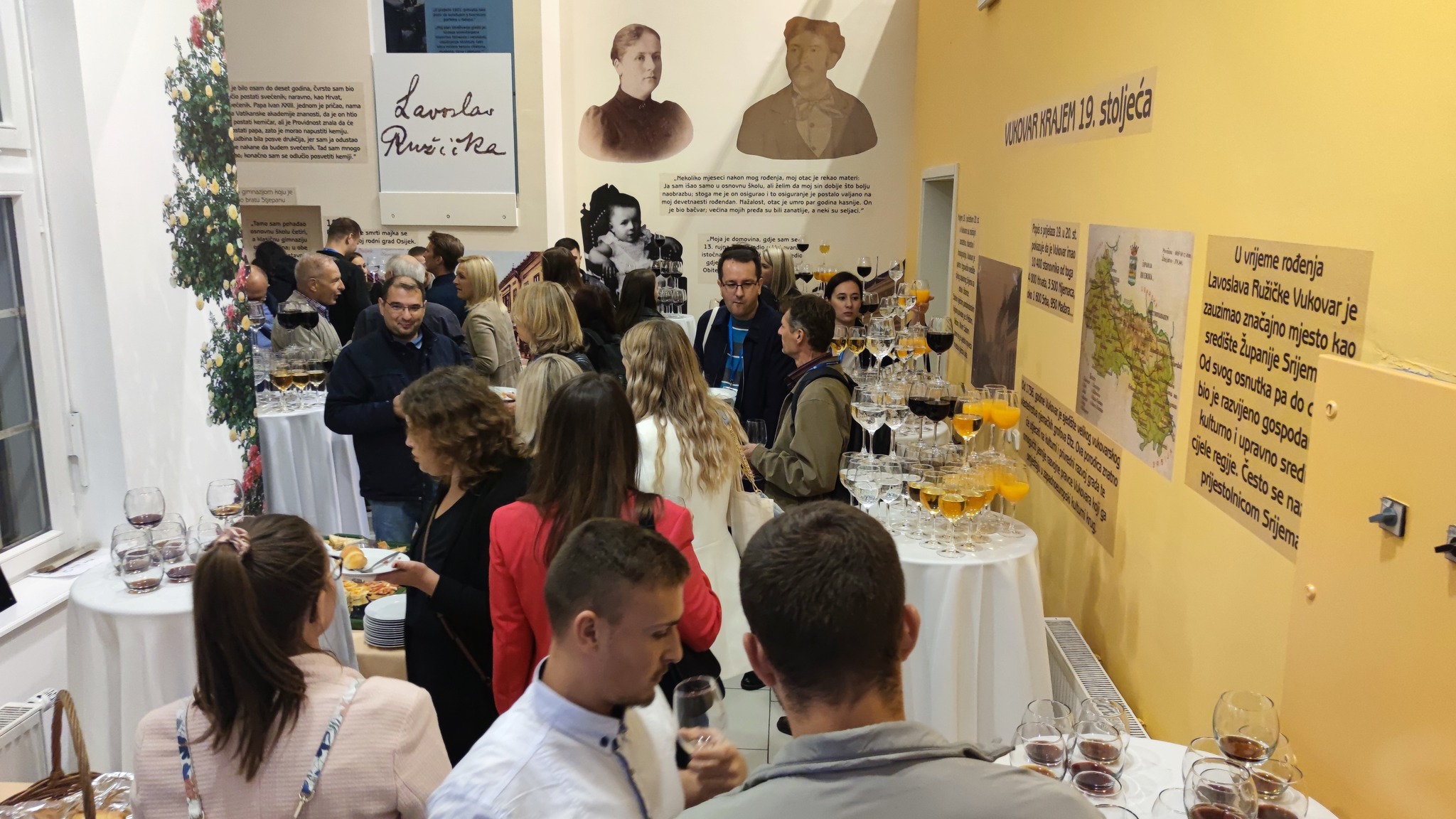
"We also decorated the hall of Ružička's house, which will enable visitors to experience Lavoslav Ružička in the way we should value him, since he is a Nobel laureate born in Vukovar. The scientific escape room offers content related to chemical processes and chemistry in general, while the Technical-Robotics Cabinet is intended for the implementation of workshops, which means that we have equipped a space in the very centre of the city where young people will be able to enjoy STEM content through informal education", explained project manager Martina Uglik, adding that these are dedicated installations that will remain available to citizens even after the end of the project itself.
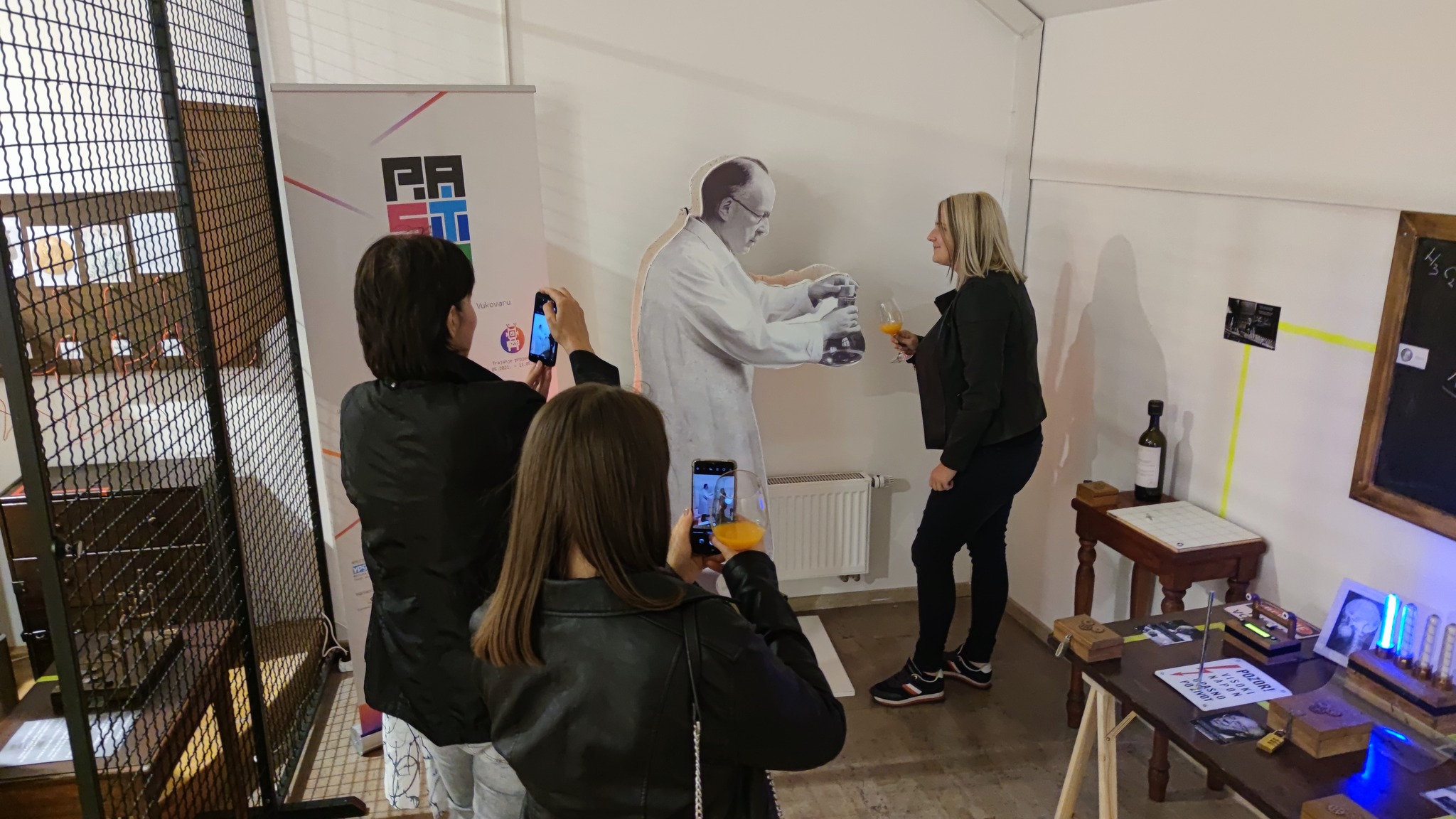
Ivanka Miličić, director of Hrvatski Dom (which manages Ružička's house), stated that they provided the space for the Youth Peace Group Danube, because the newly installed contents complement the existing ones, primarily the hologram of Lavoslav Ružička, which was installed so that the prominent scientist himself tells his life story.
"The goal was for his story to be presented in a way that children and young people can easily understand it. A photo exhibition about Ružička's life has also been set up, the new content is being followed up in the best way and what we have now is the result of the realisation of three smaller individual projects. Citizens who want to see the hologram should contact us, since Hrvatski Dom does not have a large number of employees, so we do not have a person who is solely responsible for the presentation of the contents of Ružička's house", said the director.
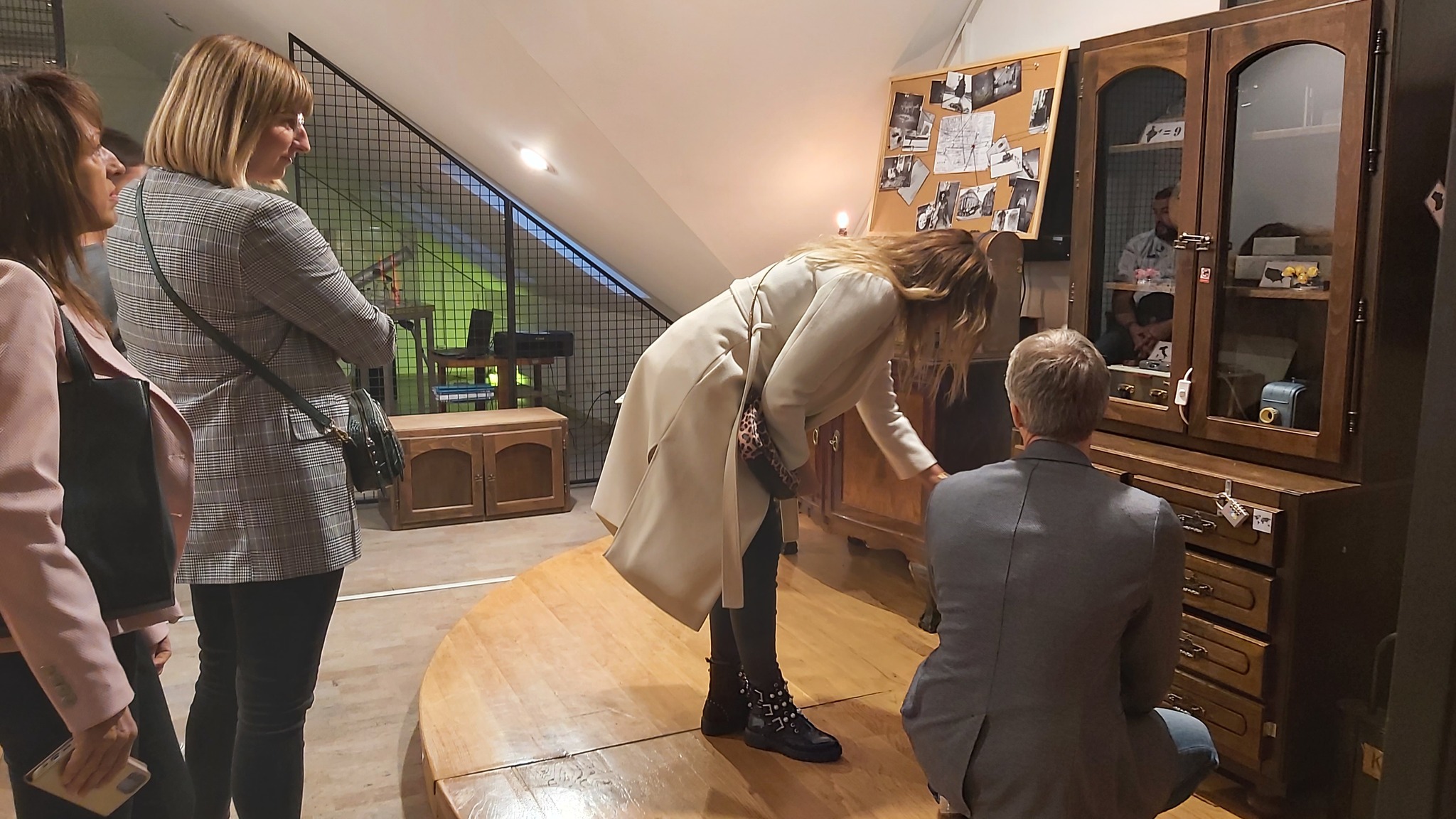
By presenting two new contents, Hrvatski dom and Youth Peace Group Danube participated in the organisation of Ružička Days, an international scientific and professional meeting held for the 19th time in the city on the Danube.
"Young Chemists Conventions take place in Ružička's house. Our goal is to pass what we do on to the younger generations, and the Young Chemists Conventions occupy an increasingly important place in the scientific circles", emphasised Miličić.
All photos courtesy of Youth Peace Group Danube.
For more, make sure to check out our dedicated Lifestyle section.
Science Festival Vukovar to be Held for the First Time
May 6, 2022 - This week, for the first time, an event aimed at bringing science closer to the public, the Science Festival is being held in Vukovar.
The Science Festival is an event that has been held in Croatia since 2003 with the aim of bringing science closer to the public by informing about activities and results in the field of science, improving public perception of scientists, and motivating young people to research and acquire new knowledge, reported Sudarić, dean of the Vukovar College of Applied Sciences.
"We brought this event to Vukovar precisely to encourage our young people, especially children attending kindergarten and primary school to do science and introduce them to the idea that science is very important. We are witnesses that during the pandemic, scientists were key, they were the ones who had to find a solution to end it", said Sudarić.
The longing for expansion of knowledge and encouraging innate curiosity in all ages are valuable goals of the Science Festival, which will take place in Vukovar on 6 and 7 May. As part of this event, more than 40 activities will be carried out at four different locations, some of which are open to the general public.
"The festival will be held at four locations - the Vukovar Gymnasium, the Vučedol Culture Museum, the Vukovar City Museum, and the "Lavoslav Ružička" College in Vukovar, where all fans of science and those involved in it, depending on age, will be able to expand their knowledge of life because it is the central theme of this year’s Science Festival. We have a lot of activities this year, the first year of the festival in Vukovar. I must admit that when we started the event, we thought that there would only be three or four registered activities", said Dean Sudarić.
The Vukovar Festival is the result of cooperation between the Vukovar Gymnasium, the Vučedol Culture Museum, the City Museum in Vukovar, and the Lavoslav Ružička College in hopes that Vukovar will receive its place on the map of the Festival and become part of this scientific event, says Sudarić.
For more, make sure to check out our dedicated lifestyle section.
4 Young Researchers Given Scholarships Under "For Women in Science" Scheme
ZAGREB, 12 April 2022 - Under the Croatian national scholarship programme called "For Women in Science", four recipients were formally awarded scholarships for 2022 at a ceremony held in Zagreb on Tuesday.
The scholarships under this scheme are awarded to up-and-coming researchers in natural sciences and interdisciplinary areas, and this year those are Natalija Ivanjko, a molecular biotechnologist, Katarina Mužina, a chemical engineer, Ana Novačić, a molecular biologist, and Marsela Polić, a scientist at the Zagreb Faculty of Electrical Engineering and Information Technology.
Until 2021, this scholarship programme, supported by the Croatian Ministry of Culture and L'Oreal Adria, had covered 58 young women researchers who did projects and studies for their doctoral degrees.
Govt Amendments To Improve Preschool Education Standards
ZAGREB, 31 March 2022 - Ensuring equal opportunities for all children and including them in the education system, increasing the number of children included and improving the quality of the education system is the aim of the final draft bill on preschool education.
The recommended amendments the government sent to parliament on Thursday are part of the education reform within the framework of the National Recovery and Resilience Plan (NPOO), with Science and Education Minister Radovan Fuchs saying the bill by no means revokes the National Pedagogical Standard.
In order to ensure that all children aged three to six can attend preschool education by 2030, it is necessary to secure additional capacities and infrastructure with an investment of HRK 1.6 billion from the NPOO, which should enhance the capacity of preschool institutions by 22,500 places.
The bill proposes a national network of children's kindergartens in an effort to improve planning regarding the construction and reconstruction of preschool institutions and to reduce the differences in development, thus enabling the inclusion of more children in early and preschool education.
The bill enables the possibility for elementary school teachers to be employed in kindergartens.
Having in mind regional differences, the bill envisages the possibility of funding from the state budget to complete investments for EU projects to build kindergartens in less developed areas.
It also provides for the possibility to secure funding to maintain the fiscal sustainability of kindergartens established by local government units based on criteria set by the government.
Final draft bill on the Croatian Science Foundation
In an effort to boost the research and innovation potential and implement programmes planned under the NPOO, the government sent a final draft bill on the Croatian Science Foundation to parliament.
The foundation was established with the aim of developing and promoting science and technological development by ensuring support to research of strategic interest for Croatia, however, the incumbent legislation is outdated, inflexible and does not correspond to the research demands in Croatia or Europe, Minister Fuchs explained.
"In an effort to increase the efficiency and functionality of investments in science projects and enable the implementation of programmes set by the NPOO, the bill defines only the framework to grant funds while the actual programmes will be defined by the Foundation's general acts," Fuchs added.
Politics: For more, check out our politics section.
Varaždin Faculty of Informatics Joins #ScienceForUkraine Initiative
ZAGREB, 10 March 2022 - The Varaždin Faculty of Organisation and Informatics said on Thursday it had joined the #ScienceForUkraine initiative due to the catastrophic consequences of the Ukraine war on its academic community.
As part of the University of Zagreb, the Faculty joined the international scientific community's social media initiative to collect information about universities, scientific institutions, and other organizations within the system that can be of help to Ukrainian students and researchers.
The Faculty, present in four northwestern Croatian cities - Varaždin, Sisak, Zabok, and Križevci - is offering help to all Ukrainian students, teachers, and researchers with whom the University of Zagreb has bilateral cooperation.
The help envisages free continuation of education in Croatian or English, the possibility of completing part of the studies at the Faculty (student exchange programme), performing professional practice, involvement in teaching and research projects, and psychological counseling.
For more, check out our lifestyle section.
Science Foundation Representatives, President Agree Total Investments in Science Insufficient
ZAGREB, 24 Jan 2022 - Croatian President Zoran Milanović and a delegation of the Croatian Science Foundation said at a meeting on Monday that total investments in science in Croatia are insufficient.
The meeting at the Office of the President was prompted by the annual report of the Croatian Science Foundation presenting work and support to research projects in 2021, the president's office said in a statement.
The Croatian Science Foundation, which is the country's most important institution financing research projects, was founded in 2001 by the parliament to promote science, higher education and technological development as well as secure support for research, higher education and technological programmes and projects.
Its officials said that over the past 20 years the Foundation had developed an independent system of evaluation and selection of the best projects and researchers, having become the most important institution for the financing of Croatian science and researchers.
"Guided by the principles of scientific excellence, impartiality and transparency and by applying the internationally accepted standards of research success, the Foundation has so far funded, from budgetary and extra-budgetary sources, the development of careers of young researchers and projects in the amount of more than HRK 1.1 billion," the statement from the president's office said.
In 2021 alone, the Foundation's financial assistance to research projects totalled HRK 227 million.
Total investments in science in Croatia are insufficient, it was said at the meeting, with the Foundation's representatives stressing that their mission was to contribute to development, which was not possible without science.
Speaking of the results so far, the Foundation's representatives pointed out more than 2,000 projects, of which many were successful on the global scale, as well as cooperation with more than 900 young researchers and around 6,000 scientists who work at Croatian institutes and universities.
New generations of PhD holders are being educated and trained in a dozen of national and international programmes, the Foundation has enabled the establishment of own research groups for young researchers, and supported leading Croatian scientists in implementing research that is of national significance or is internationally competitive, the Foundation's officials said.
Agreements on Croatian Open Science Cloud Initiative Awarded to Institutions
ZAGREB, 3 Sept 2021 - Agreements on the initiative for the Croatian Open Science Cloud (HR - OOZ) were awarded to a score of research institutions, universities and faculties at a ceremony held in the Science and Education Ministry on Friday
The agreements regulate resources and services necessary for the collection, processing, storage, dissemination and availability of research data.
This initiative is the result of years-long joint efforts of many stakeholders from the science and tertiary education in the open science movement, and the initiative was launched with the support of the Ministry of Science and the Croatian Science Foundation.
It creates preconditions for developing the Croatian open science cloud that will enable coordinated development of the country's e-infrastructure.
The initiative will bring together relevant stakeholders in creating required preconditions for the implementation, realisation, and promotion of open science.
Addressing the ceremony, Minister Radovan Fuchs said that open science constituted the future of successful science and research.
The Croatian Open Science Cloud will make it possible for research data, services and resources, created in Croatia, to be included in the European Open Science Cloud (EOSC).
The head of the University Computing Centre (SRCE), Ivan Marić, said that this institution made an active contribution to the EOSC through its participation in many European projects, while building a new generation of e-infrastructure for advanced science and education.
For more news, CLICK HERE.
Croatian Scientists Researched Radicalism: Results Presented at Prestigious ISPP Conference
July 19, 2021 - With many options for scientific research, Croatian scientists researched radicalism and presented their findings at the conference hosted by the International Society of Political Psychology (ISPP).
Croatian scientists continue to make a global impact with their research. As Ivo Pilar Social Research Institute informed on its website, Ph.D. candidate Tomislav Pavlović participated in the 44th annual International Society of Political Psychology (ISPP) conference that occurs from July 11-13.
As listed by the official website of the Society, ISPP is an interdisciplinary organization representing all fields of inquiry concerned with exploring the relationships between political and psychological processes. Nonprofit, scientific, educational, and non-partisan.
„Members include psychologists, political scientists, psychiatrists, historians, sociologists, economists, anthropologists, as well as journalists, government officials, and others. The Society is international, with members from all regions of the world: the Americas, Europe, Asia, the Middle East, and Africa“, says ISPP.
Pavlović participated in two panels of this year's online conference.
„Within excellently moderated and visit panel “The Process of Radicalization II“, Tomislav Pavlović presented findings of research regarding roles of dark personalities character traits and inequality in predicting radicalized intentions“, stated Ivo Pilar Social Research Institute.
The research, Pavlović co-authored with a senior scientific adviser at the Institute of Social Sciences Ivo Pilar, Renata Franc is published as part of the EU Horizon DARE project.
DARE stands for Dialogue About Radicalisation and Equality and its goal is to „significantly increase understanding of why and how young people become radicalised and our capacity to effectively counter-radicalisation“. The project started on May 1 2017 and it will be concluded this October.
„Despite multiple studies providing evidence of subjective inequality and dark personality traits as predictors of extremism, their interactive effect on extremism has not been studied. As such interactions are implied in multiple models of radicalization, this research was focused on testing them. While Study 1 (N = 279), based on a convenient student sample, established the interaction between perceived group relative socio-political deprivation and Dark Triad traits in the prediction of support for political violence, Study 2 (N = 461), based on a quota sample, specified it in the context of radicalized intentions: emotional component of group deprivation (anger, contempt, and disgust) interacts with the Dark Tetrad in the prediction of radicalized but not activist intentions, even after correcting for social desirability bias. Their combined explanatory power (up to 25% of explained variance) robustly confirms the role of individual dispositions and (responses to the perception of) contextual factors, as well as their interactions, in radicalization“, says the abstract of Pavlović's and Franc's research.
„Additionally, as part of „Authoritarianism, Ethnocentrism, and Social Dominance“ panel, Tomislav Pavlović presented findings of psychometric, intercultural check of the relatively new orientation scale for social dominance (SDO-7) (Factor structure of the short form of Social dominance orientation questionnaire (SDO7) on youth samples from multiple countries; examined by dana gathered by questionnaires of pupils from nine countries as part of the CHIEF project (Cultural Heritage and Identities of Europe’s Future)“, added Ivo Pilar Social Research Institute.
Along with other researches conducted within the CHIEF project, Pavlović's participation in the conference is one more beautiful instance of Croatian scientific excellence. This shows Croatian scientists are stepping out as equals with their international colleagues presenting findings which, when it comes to social sciences, may not only help solve problems Croatia is facing but the world in general.
When it comes to youth, learn more about what Croatia can offer to kids and families on our TC page.
For more about science in Croatia, follow TCN's dedicated page.
REPLACE Project Presented at JOINT SECAP Workshop in Rijeka
July 9, 2021 - The REPLACE Project was presented at the JOINT SECAP workshop in Rijeka on June 23. There is no better way to end a year and a half-long Interreg project for Croatia, which was one more ecosystem-concerned cooperation between Italy and Croatia.
When it comes to energy efficiency in Croatia, there is no doubt anybody cares about it more than the scientific community working and associating with Energy Institute Hrvoje Požar (EIHP).
Not only is the EIHP building on its way to becoming the first nearly zero energy building in the whole of the country, but EIHP's expertise also plays a big role in REPLACE Project from Horizon Europe. As TCN previously covered, the project aims to make Primorje Gorski Kotar County energy-renewable territory, and the ongoing meetings about the project (in collaboration with the University of Rijeka) see slow but steady progress in those respects.
As EIHP reports on its website, June 23 saw REPLACE Project presented in the congress hall of Rijeka's Jadran Hotel as part of the final workshop of the JOINT SECAP project.
„On behalf of EIHP, Antonia Tomas Stanković presented REPLACE in the second half of the event. The goal is to support European energetic, climate, environmental, economic, and social goals by 2030 and 2050 by encouraging the gradual replacement of inefficient and outdated cooling and heating systems with new, energy-efficient systems based on renewable energy sources“, informed EIHP.
JOINT SECAP, part of Interreg Italy-Croatia strategic program (much like the CASCADE Project TCN previously wrote about) aims to improve the climate change monitoring and planning of adaptation measures tackling specific effects in the cooperation area.
„The project idea reflects the necessity to operate at a wider district level and better define strategies and actions for climate change adaptation, especially for those weather and climate changes and hydrogeological risks affecting coastal areas. The first phase is developed to build the common methodology for Joint Actions definition and implementation and to share the basic knowledge about issues concerning climate change adaptation strategies and energy efficiency measures. The second phase starts upon the analysis uploaded in the web platform, acting as a useful tool for the development of scenarios for the Joint Actions to be implemented in the Joint SECAP plans, those last constituting the main project deliverable“, explained JOINT SECAP on its website. The workshop in Rijeka was the conclusion of the project as JOINT SECAP ended on June 30 after it began on January 1, 2012, with a budget of € 2,094,857.
The workshop in Rijeka, writes the EIHP website, was organized by Primorje Gorski Kotar County Office for Regional Development Infrastructure and Project Management and by Kvarner Regional Energetic Agency. Representatives of local authorities of Primorsko-Goranska county that were enrolled in creating an Energetic and Climate Sustainable Development Action Plan. These local authorities include towns such as Opatija and Kastav and the districts of Čavle, Matulji, and Viškovo.
„Joint SECAP analyzed energy spending for the included towns and districts, their risks and vulnerability regarding climate change, yearly emissions of CO2 in sectors of building construction industry, public lighting, and traffic. Concrete measures with the goal of adjusting to the effects of climate change and CO2 emissions down to at least 55% by 2030 were suggested“, stated EIHP.
With measures identified, the race with time begins as these measures should be in place as fast as possible to tackle one of the biggest challenges humanity is facing, and Croatia isn't able to be isolated from the threat.
Learn more about Rijeka on our TC page.
For more about science in Croatia, follow TCN's dedicated page.
Zagreb Grič Cannon: Explosive Noon Reminder
July 9, 2021 - Zagreb Grič Cannon - a reminder of noon, and a reason to avoid the centre if you aren't a fan of loud sounds. Get your noise-canceling headphones and read about the cannon's history, courtesy of TCN reporter Ivor Kruljac.
If you find yourself walking around a wider Zagreb centre (such as Savska Cesta or Marin Držić Avenue) around noon, and you focus on the sounds of the city, you may notice a weird sound in between traffic and people passing. An unusual sound, as if someone dropped a heavy box. But, if around noon, you find yourself at Ban Jelačić square or upper town, you will hear a clear and loud BANG! Fear not, as this is not a terrorist attack, and you weren't lied to when your tourist agency swore to god Zagreb is safe from such horrors. The heart-stopping bang is a signifier of noon. If you hear a boom at 11:59 or 12:01, your watch is behind a minute. The cannon states that clear and very, very loud.
Loudest time checker you could think of
Grič cannon first started signaling noon on January 1, 1877, and was located at the State's Meteorology department, back in times when Croatia was part of the Austrian-Hungarian Monarchy. It wasn't until 1927 that it was moved to Fort Lotršćak where it is situated today.
According to the Klovićevi Dvori Gallery's official website, Fort Lotrščak was named after a bell and comes from campana latrunculorum, which is Latin for „Bell of Thieves“ that rang before closing city gates. Historians aren't exactly sure what the Fort looked like in medieval times, although it is speculated based on old sketches that it had only two floors. It wasn't until 1857 that romanticistic architecture gave the fortress today's four floors and an additional tower at the very top (from which you have a breath-taking view of Zagreb today).
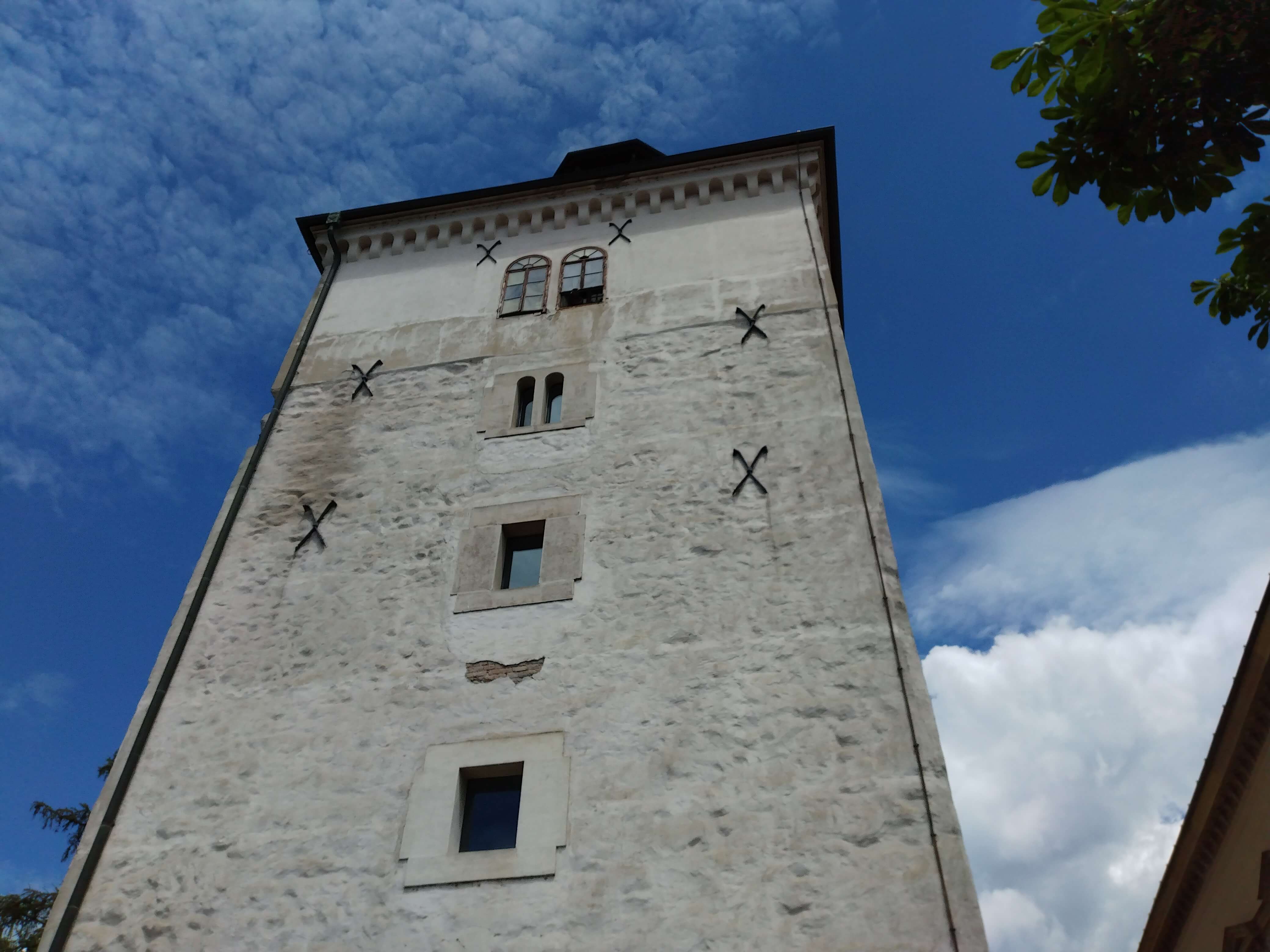
Fort Lotrščak © Ivor Kruljac / Total Croatia News
In the 17th century, the Fort served as trading storage and had various other ways to adapt to the need of Zagreb and Zagreb's citizens at different times. At one point, when the City was out of money to restore and repair the Fort, it gave Lotrščak to citizens for rent. Citizens who wanted the Fort also had the obligation of maintaining it, and in case of enemy assault, it was to be returned back to the City for defense purposes.
Warning shot
Speaking of defense purposes, an old legend says how this cannon managed to save Zagreb with a single shot from the Ottoman conquerors. Legend has it that the Ottoman commander Hasan Pasha (Hasan Paša) settled his army at the coast of the Sava river, in today's area of Novi Zagreb. He was preparing to cross the river and invade the city. But before that, he was about to have lunch one day, and Zagreb fired from the cannon in the Ottoman's direction, close to Hasan and blasting a chicken he wanted to eat. The shot scared the hell out of the Ottomans and they retreated, leaving Zagreb intact.
Changing arsenal
Over the course of time, there were five different Grič cannons that served the purpose of signaling noon. The current canon was given during Zagreb's Univerzijada in 1987, courtesy of the Yugoslavian National Army (JNA) as Croatia at the time was part of the Socialist Federal Republic of Yugoslavia (SFRJ).
As for the first three, you can find them today in the collection of the Zagreb City Museum. The first cannon originated in 1876 and was replaced by the second cannon in the unidentified year at the end of the 19th century. The third cannon you can see in Zagreb City Museum, and the first that was situated on Lotrščak fort, was introduced in 1928, and it was made by restoring a Polish cannon from 1912.
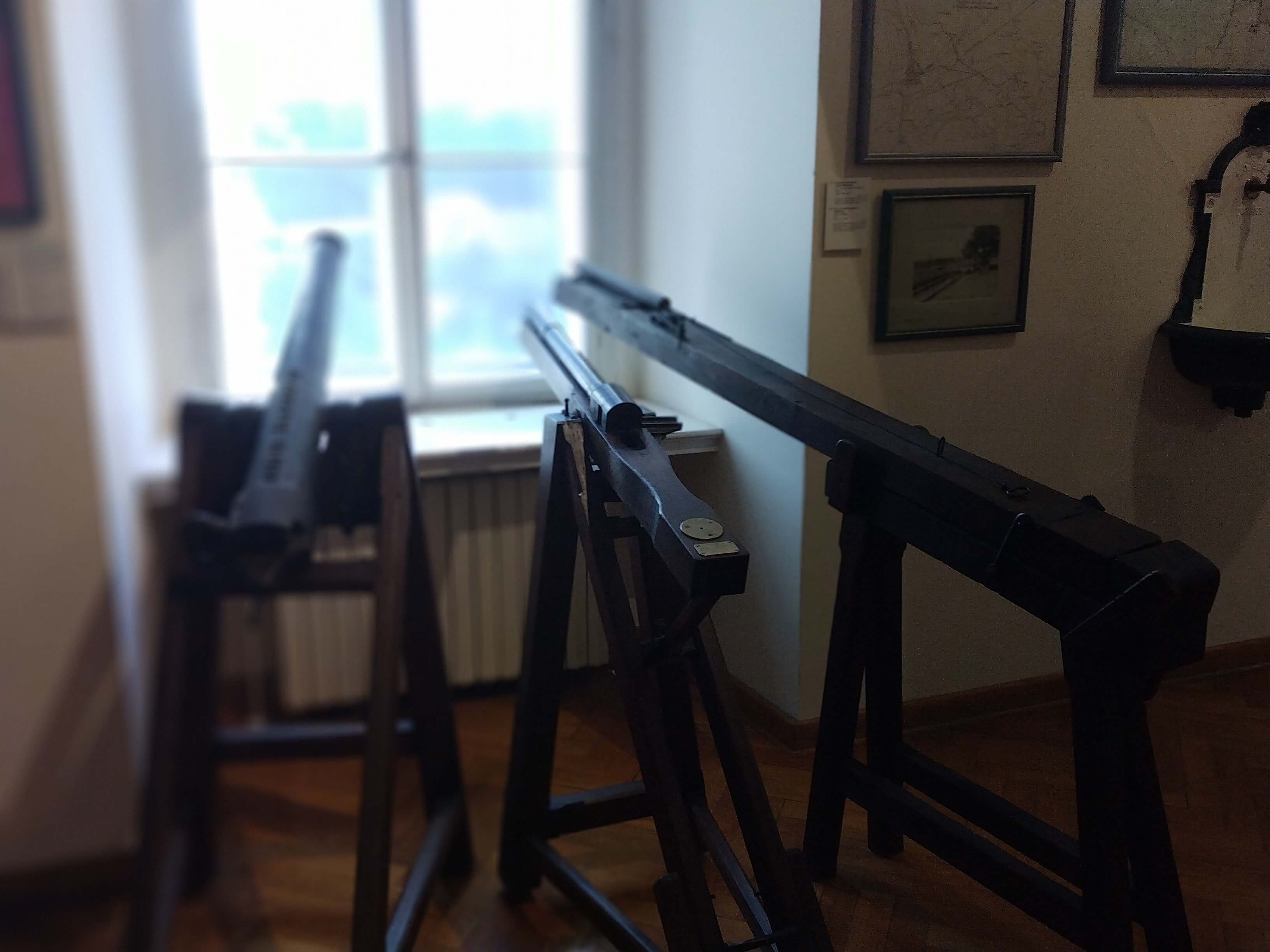
Three cannons showcased at Zagreb City Museum © Ivor Kruljac / Total Croatia News
So finding yourself in front of Fort Lotrščak (whose entrance is located right next to the Upper town funicular station) is not recognizable if you are not a fan of loud noise as it can give you a sound fright even down below at Jelačić square and the surrounding area. But, for the brave ones, the Grič cannon can provide a unique souvenir from Zagreb. It doesn't use live ammo (the cannon is modified so it can't), but it does fire several pieces of thick cardboard that then flies down to the area underneath Lotrščak's entrance and smelling like gunpowder.
Ceased fire
Despite being a regular background sound for the experience of living in Zagreb, Grič cannon went through periods when it ceased fire and stopped making statements. The first such instance was World War I and then followed by the war in the nineties. Most recently, the cannon was silenced after the Zagreb earthquake on March 22, 2020, but it re-fired hot and heavy sometimes in May 2020. However, followed by the December 29th Petrinja earthquake, which was also felt heavy in Zagreb, the cannon is silent even today.
„We are not quite sure when it will re-fire“, briefly commented the Zagreb Tourist Board member that welcomed me in Fort Lotrščak, one of the locations where Zagreb TB has a regular stand. Still, despite the cannon being silenced, you can climb and sightsee Lotrščak, the famous cannon as well as the watchtower on top of the Fort, for the prize of 20 kunas.
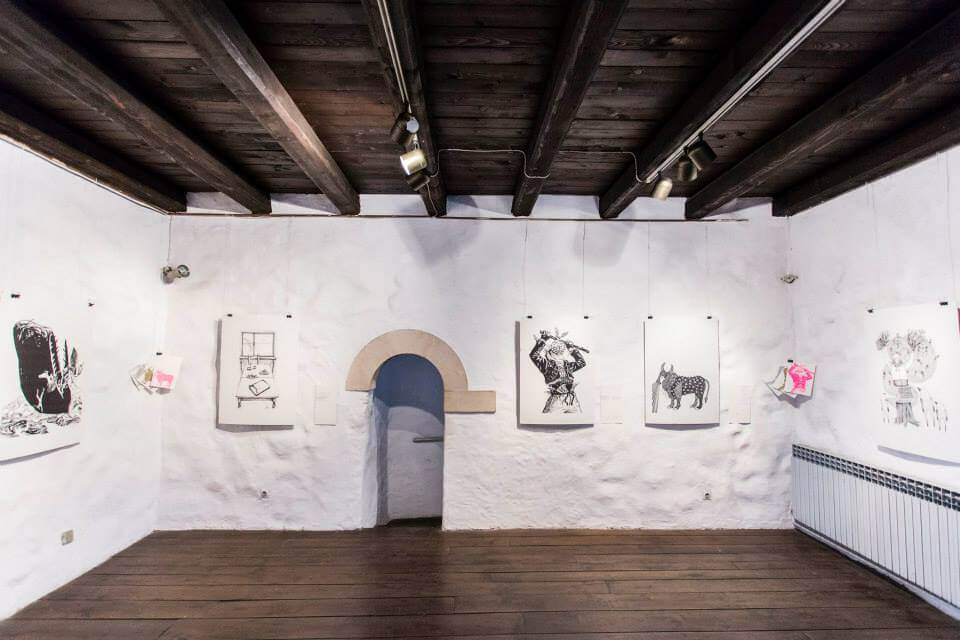
One of the exhibitions at Lotrščak © Kula Lotrščak
The Lotrščak Fort address is Tomićeva 9, and the Fort occasionally also hosts various exhibitions at times too. But, the cannon is a regular feature, and there are lots of info on the history of the cannon and the Fort itself there too on the walls- both in English and Croatian.
Learn more about Zagreb on our TC page.
For more about history in Croatia, follow TCN's dedicated page.


